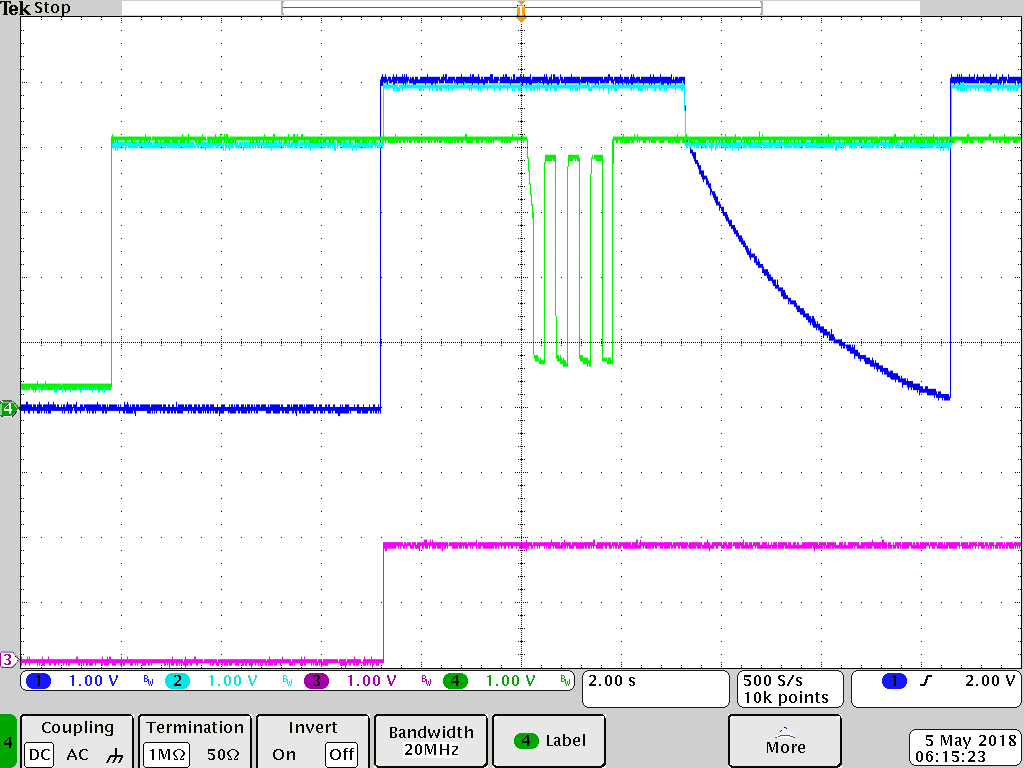I am using Beaglebone which has the TPS65217 PMIC and using it's battery charging capability. AC power is used and battery is charging correctly. I use the default settings except for setting the charger enable bit in CHGCONFIG1 and the battery is a Lithium Ion battery. However, on removing of AC power it was not being powered from battery which I expected it would. I then set the DPPM bit in CHGCONFIG0 register and it seems to work then. However, this is strange since CHGCONFIG0 register is suppose to be read only.
From my reading of Section 8 of the datasheet, I expected the switch between AC and battery power to work without any special setting or do I miss something?
Also, on Page 49 of datasheet, it says that if the NTC type bit is set, it is for 10k and if not set, it is for 100k. However, on Page 33 it says that for 100k NTC, NTC type bit should be set. From my testing, I have found the former to be correct.
Can someone clarify the above? Thanks.


